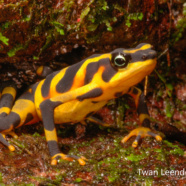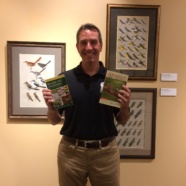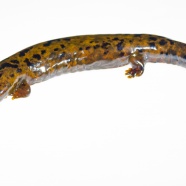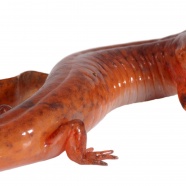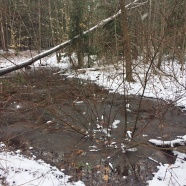RTPI’s Twan Leenders Invited to Speak at Costa Rica’s International Herpetological Symposium IV
Costa Rica is home to 5% of the planet’s biodiversity. Though small in geographic area, the country has one of the highest densities of reptiles and amphibians species in the world with more than 440 species. From September 6 – 9, 2018, the Selva Verde Lodge and Private Reserve in the lowland tropical rainforests of Sarapiquí, Costa Rica hosted the fourth International Herpetological Symposium. This event featured presentations and lectures on the conservation, taxonomy, ecology, and biology of reptiles and amphibians. Symposium attendees participated in conferences and field...
Read MoreRTPI’s President Delivers Keynote Address at International Herpetological Symposium
Twan Leenders, president of the Roger Tory Peterson Institute of Natural History (RTPI) and a conservation biologist with 25 years of experience working with endangered amphibians and reptiles will be the opening speaker of the 41st annual International Herpetological Symposium (IHS), which is held from June 20-23 at the Houston Zoo in Houston, Texas. “Some level of environmental awareness is everybody’s responsibility; this symposium will be a great gathering of the minds and we are all committed to finding ways to communicate our collective knowledge to other scientists, naturalists, and...
Read MoreTake Cover!
For this Salamander Saturday, we thought we’d share a little video of one of our new residents, Tweeg, making his way under his hiding rock. Hellbender’s bodies are very flat and streamlined, which allows them to slide easily underneath large rocks sitting on a stream-bed. While under their rock of choice, hellbenders will wait patiently for prey to come near and will snatch them up for a quick meal. Currently, Oneka and Tweeg have some fish they share space with and occasionally snack on whilst under their...
Read MoreSpring Salamander
Hey look – a hot-dog with eyes! Wait, that’s a Spring Salamander (Gyrinophilus porphyriticus)! This large, lung-less salamander is a common resident in the many springs and streams that run through our local forests. It’s stature and bright coloration make it stand out, but also serve as protection from predators. Spring salamanders can grow to over eight inches in length and produce noxious skin secretions while using their color to mimic even more toxic species. It isn’t a salamander any predator would want to mess with, and it probably wouldn’t taste anything...
Read MoreWinter’s Not Over Yet
The fresh blanket of snow across the Western New York landscape is a good reminder that winter isn’t over just yet. However, some of our resident amphibians have been receiving crossed signals due to recent increases in daylight hours and above average temperatures; we have actually gotten reports of salamanders and frogs moving to nearby ponds and vernal pools to lay their eggs. With this weekend’s dropping temperatures, local pools have started to ice over indicating freezing temperatures near the surface. The eggs of some amphibian species are able to cope with fluctuating spring...
Read More



